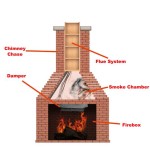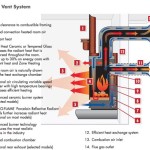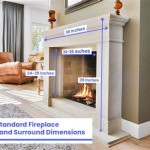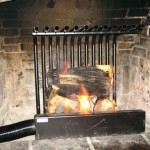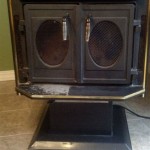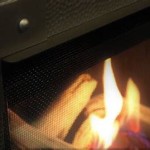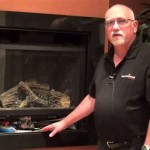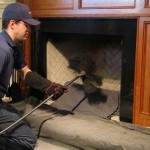Electronic Fireplace Inserts: A Comprehensive Overview
Electronic fireplace inserts, also known as electric fireplace inserts, provide a convenient and efficient alternative to traditional wood-burning or gas fireplaces. These units offer the visual appeal of a flickering flame without the complexities associated with fuel sources, venting requirements, or extensive maintenance. They are increasingly popular for homeowners looking to add warmth and ambiance to their living spaces while retaining control over energy consumption.
An electronic fireplace insert is essentially a self-contained heating unit that slides into an existing fireplace opening or a purpose-built mantel. The core functionality relies on electric heating elements and advanced flame projection technology. This technology creates a realistic flame effect, often utilizing LED lights and carefully designed reflectors to simulate the movement and color variations of a real fire. The heating element, typically a fan-forced heater, circulates warm air into the room. This combination of visual realism and efficient heating makes electronic fireplace inserts a desirable option for many households.
Understanding the Key Components of an Electronic Fireplace Insert
The design of an electronic fireplace insert involves several crucial components working in unison to provide both aesthetic appeal and functional heating. A primary element is the heating element, usually a resistance coil or an infrared heater. This element converts electrical energy into heat, which is then distributed by a fan. The heating capacity is typically measured in British Thermal Units (BTUs) or wattage, determining the size of the space it can effectively heat. Many models offer adjustable heat settings, allowing users to customize the output based on their comfort preferences and the room's dimensions.
The flame effect, a critical aspect of the visual appeal, is achieved through various technological methods. LED lighting is commonly used, projecting light onto a screen or reflector to create the illusion of dancing flames. Some higher-end models incorporate holographic technology or water vapor to generate a more three-dimensional and realistic flame appearance. The choice of media, such as artificial logs, glowing embers, or colored crystals, further enhances the authenticity and customizable aesthetic of the fireplace. The lighting and flame effects often operate independently of the heating element, allowing users to enjoy the ambiance of a fire without the added warmth during warmer months.
The control panel, whether a physical interface on the unit or a remote control, provides users with the ability to adjust temperature settings, flame intensity, and other features. Many modern electronic fireplace inserts include advanced features such as programmable timers, thermostats, and even smartphone integration, enabling remote control and energy management. Safety features such as overheat protection and automatic shut-off mechanisms are also standard, ensuring safe operation and preventing potential hazards.
Advantages of Choosing an Electronic Fireplace Insert
The adoption of electronic fireplace inserts presents several significant advantages over traditional fireplaces. A primary benefit is ease of installation. Unlike wood-burning or gas fireplaces that require venting, chimney modifications, and professional installation, electronic inserts can be installed with minimal effort. Often, all that is required is plugging the unit into a standard electrical outlet. This eliminates the need for costly renovations or construction, making it a practical choice for both homeowners and renters.
Another key advantage is the enhanced safety profile. Wood-burning fireplaces pose risks such as smoke inhalation, carbon monoxide poisoning, and fire hazards from stray embers. Gas fireplaces, while cleaner burning than wood, still require proper ventilation and can leak dangerous gases if not properly maintained. Electronic fireplace inserts eliminate these risks entirely. They produce no emissions, require no venting, and feature built-in safety mechanisms to prevent overheating. This makes them a safer option, especially for households with children or pets.
Energy efficiency is another compelling reason to consider an electronic fireplace insert. Traditional fireplaces lose a significant amount of heat through the chimney, reducing their overall efficiency. Electronic inserts, on the other hand, convert almost all of the electrical energy into heat, making them far more efficient. They also offer zone heating capabilities, allowing users to heat only the rooms they are using, rather than heating the entire house. This localized heating approach can lead to substantial energy savings, especially during colder months. The adjustable thermostat allows for precise temperature control, further optimizing energy usage and reducing heating costs.
Factors to Consider When Selecting an Electronic Fireplace Insert
Choosing the right electronic fireplace insert requires careful consideration of several factors to ensure optimal performance and satisfaction. The size of the room to be heated is a crucial determinant. The BTU or wattage rating of the insert should be appropriately matched to the square footage of the space. An undersized unit will struggle to effectively heat the room, while an oversized unit may lead to excessive energy consumption and discomfort. Manufacturers typically provide guidelines based on room size to assist in selecting the appropriate heating capacity.
The aesthetic design of the insert should also align with the user's preferences and the existing décor of the room. Electronic fireplace inserts are available in a wide range of styles, from traditional to contemporary, with various finishes and media options. The choice of artificial logs, embers, or crystals, as well as the design of the firebox and mantel, can significantly impact the overall look and feel of the fireplace. It is important to select a design that complements the room's aesthetic and creates the desired ambiance.
Features and functionality are also important considerations. Advanced features such as remote control, programmable timers, and adjustable flame settings can enhance convenience and usability. The quality of the flame effect should be evaluated, as this is a key factor in creating a realistic and enjoyable experience. Reading reviews and comparing different models can help in assessing the quality and reliability of the flame technology. Finally, considering the warranty and customer support offered by the manufacturer is essential to ensure long-term satisfaction and protection against potential defects or malfunctions.

Modern Flames Redstone 30 Inch Built In Electric Fireplace Insert Firebox Heater Rs 3021 Fireplaces Depot

Valuxhome 36 In 750 1500 Watt Black Electric Fireplace Insert With Thin Trim Adjustable Flame 3 Color Top Light Valux33zl Hd The Home Depot

Clihome Flame 30 In Wall Mounted Automatic Constant Temperature Electric Fireplace Insert Smd Ef28z The Home Depot

60 Inch Recessed Wall Mounted Electric Fireplace 750 1500w Remote Oneinmil

Clihome Flame 50 In Wall Mounted Automatic Constant Temperature Electric Fireplace Insert Ef50r The Home Depot

Fireplace Insert Installation Wood Inserts Gas Pellet And Electric

Simplifire Electric Insert 30 Fireplace Sf Ins30 Bk North Country Fire

Majestic Simplifire Electric Fireplace Insert 30 Colorado Hearth And Home

The 1 Electric Fireplace Insert Dealer 110 Low

Modern Flames 26 54 Redstone Series Conventional Built In Electr Fireplaces Usa
Related Posts

